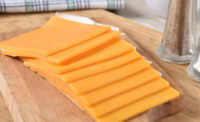When you check out our State of the Industry report in this issue, you’ll find that several segments of the dairy industry experienced flat growth in the 52 weeks ending Sept. 4. For example, in some categories, dollar sales are up, while unit sales are flat or down, according to IRI research. The sales increase is likely in part due to inflation, while the unit sales data perhaps tells a more accurate story.
However, this is not a doom-and-gloom scenario. Several of the categories experiencing flat growth improved when compared to the prior year, when sales suffered year-over-year decline. For instance, refrigerated butter saw dollar sales of $3.3 billion, a year-over-year increase of 7.9% for the 52 weeks ending Sept. 4, IRI data states.
Dairy has a long future runway. One place where dairy products and the dairy industry can and should play an increased role is in alleviating hunger and nutrition issues in the United States.
International Dairy Foods Association (IDFA) President and CEO Michael Dykes, D.V.M, wrote the following in a letter to the Biden Administration in advance of its Conference on Hunger, Nutrition, and Health, which took place on Sept. 28:
“In order to help reach the goal of increased healthy eating, IDFA supports federal funding that is sufficient and consistent with encouraging adequate consumption of nutrient-rich foods, including three servings of dairy each day for most Americans. There are a number of actions that the federal government could take to help meet these goals, including strengthening and expanding existing federal nutrition assistance programs, streamlining procedures for federal procurement programs, building additional public-private partnerships for food donations and implementing a national Healthy Dairy Incentive Program under SNAP (Supplemental Nutrition Assistance Program).”
On the flip side of this coin, consumers want to consume dairy because it is nutritious and is affordable, according to participants in a Morning Consult survey national tracking poll commissioned by the IDFA. The national poll was conducted from Sept. 1-6, among a sample of 1,666 registered voters with children in public schools, including 709 voters that participate in at least one federal nutrition feeding program.
Polled participants of federal nutrition programs stated they would purchase more dairy when given a discount or incentive to encourage healthy eating.
Nine-in-ten voters with children in public schools who participate in federal nutrition programs say they typically purchase milk (93%) and cheese (91%), while three quarters say they typically purchase yogurt (77%), according to the research. Three-quarters of these nutrition program beneficiaries also consider nutritious dairy products like milk (73%), yogurt (78%), and cheese (74%).
Additionally, more than half of SNAP program beneficiaries polled indicate they would use a 50% discount to buy more milk (54%), yogurt (49%), and cheese (59%).
“This new polling data highlights just how impactful a national dairy incentive program would be for our nation’s most nutritionally insecure people,” Dykes said. “IDFA and our members are committed to ending hunger and malnutrition while improving health outcomes and reducing diet-related chronic diseases by making it easier for all Americans to access healthy, affordable foods, including nutritious dairy products. …We urge the Biden-Harris Administration to support a national dairy incentive program within SNAP that offers affordable, nutritious dairy products to those most in need.”
Whether flat is up, in terms of dairy sales, is based upon how one views the data presented in our State of the Industry report. No matter what, there are avenues for growth.




